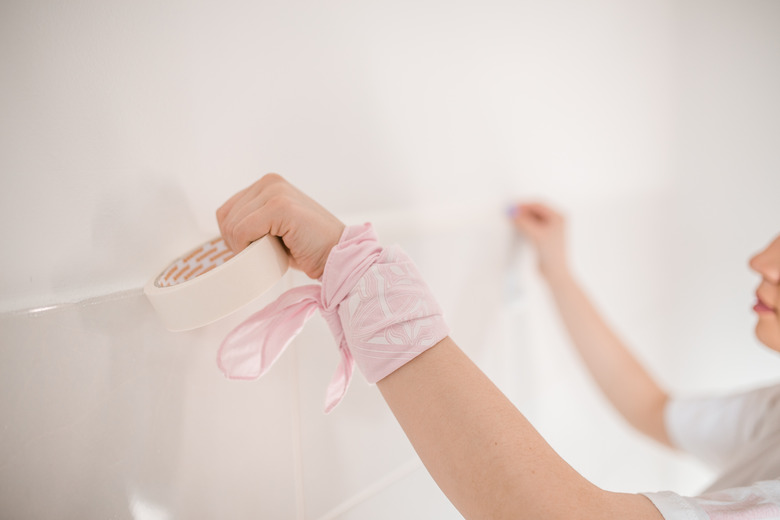4 Ways To Remove Tape Residue From Walls
We may receive a commission on purchases made from links.
The same adhesive goo that makes tape stick to a wall sometimes stays on the wall after you peel the tape away. Wiping it with soapy water may work in some instances, but it usually takes a little more to remove all the residue. Liquids such as rubbing alcohol or vinegar often help, as do citrus-based adhesive removers. Follow up with a baking soda paste if any residue remains.
Tip
No matter which method you use, always test the cleaning product in an inconspicuous area, especially if your wall coverings are delicate. Semigloss to glossy paint usually holds up well to a good scrub, but flat wall paint and some wallpaper may require a gentle touch.
1. Use Vinegar or Rubbing Alcohol
1. Use Vinegar or Rubbing Alcohol
Vinegar or drugstore-variety rubbing alcohol removes adhesive residue from walls in some cases. Not all adhesives are the same, so it may take several different attempts to remove all of the residue.
- Pour some of either white vinegar or rubbing alcohol onto a lint-free white cloth or a paper towel and then press the cloth over the tape residue.
- Wait 30 seconds or so; then gently rub the area with the cloth.
- Lift the cloth and touch the treated area to see if it still feels sticky. If you aren't sure, dab the area dry with a paper towel or another lint-free cloth, wait a few minutes, and touch the spot again.
- Apply another vinegar or alcohol treatment if necessary or spray it on and let it sit for up to 30 minutes, holding a cloth beneath the spot as you spray to catch some of the dripping liquid.
2. Use Citrus-Based Goo Removers
2. Use Citrus-Based Goo Removers
Citrus-based products, such as Goo Gone, specialize in removing gummy adhesive residues. Not all adhesive removers are designed for all surfaces, so read the package label to ensure it's safe for your wall finish or covering.
- Dab some of the adhesive remover onto the tape residue with a cotton swab or a corner of a white lint-free cloth using enough liquid to cover all the residue.
- After five minutes, wipe the area with a fresh lint-free cloth and then follow up with a little soapy water on another cloth.
- Blot the area dry and check the spot for stickiness. If it still feels sticky, apply a little more adhesive remover and gently rub it over the adhesive or scrape it with a plastic scraper before cleaning it off with soapy water again.
3. Make a Homemade Scrubby Paste
3. Make a Homemade Scrubby Paste
Baking soda offers just the right amount of abrasive power to scrub away adhesive residue without harming the average surface.
- Pour 1 tablespoon or so of baking soda into a shallow bowl and then add a few drops of water at a time, stirring to make a paste.
- Once the mix feels pasty, wrap your finger in a damp lint-free cloth, dip your covered finger into the paste, and then rub the paste over the adhesive residue, scrubbing gently.
- Wipe away the residue with a clean, damp portion of the cloth and then test the spot for tackiness. If it still feels slightly sticky, go over it again with more baking soda paste.
- Clean up with a fresh corner of the damp cloth.
4. Try a Slightly Risky Oil Method
4. Try a Slightly Risky Oil Method
Oily substances, such as cooking oils or even peanut butter, have a special power: They remove sticky residue from all sorts of surfaces. The risk factor is that they may leave oily marks on some wall coverings, especially some brittle, dry wallpapers, so use oils only as a last resort.
- Grab some olive oil, coconut oil, petroleum jelly, or peanut butter and then spread a small amount over the sticky residue and let it sit for five minutes.
- Wipe off the substance carefully to avoid spreading it farther and then use a plastic scraper over the sticky spot to help lift anything still stuck to the wall.
- Follow up with soapy water on a lint-free cloth and then blot the area dry.
